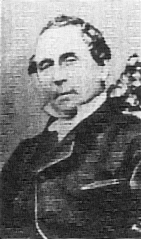
Mecklenburg is a historical region in northern Germany comprising the western and larger part of the federal-state Mecklenburg-Western Pomerania. The largest cities of the region are Rostock, Schwerin, Neubrandenburg, Wismar and Güstrow.

Rostock, officially the Hanseatic and University City of Rostock, is the largest city in the German state of Mecklenburg-Vorpommern and lies in the Mecklenburgian part of the state, close to the border with Pomerania. With around 208,000 inhabitants, it is the third-largest city on the German Baltic coast after Kiel and Lübeck, the eighth-largest city in the area of former East Germany, as well as the 39th-largest city of Germany. Rostock was the largest coastal and most important port city in East Germany.

Güstrow is a town in Mecklenburg-Vorpommern, Germany. It is capital of the Rostock district; Rostock itself is a district-free city and regiopolis.
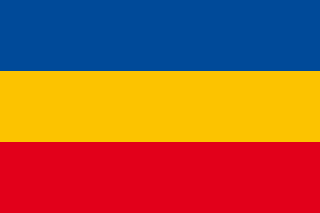
The Duchy of Mecklenburg-Schwerin was a duchy in northern Germany created in 1701, when Frederick William and Adolphus Frederick II divided the Duchy of Mecklenburg between Schwerin and Strelitz. Ruled by the successors of the Nikloting House of Mecklenburg, Mecklenburg-Schwerin remained a state of the Holy Roman Empire along the Baltic Sea littoral between Holstein-Glückstadt and the Duchy of Pomerania.

Sternberg is a town in the Ludwigslust-Parchim district of the state of Mecklenburg-Vorpommern.

Barth is a town in Mecklenburg-Vorpommern, Germany. It is situated at a lagoon (Bodden) of the Baltic Sea facing the Fischland-Darss-Zingst peninsula. Barth belongs to the district of Vorpommern-Rügen. It is close to the Western Pomerania Lagoon Area National Park. In 2011, it held a population of 8,706.
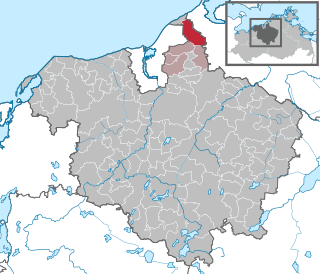
Gelbensande is a municipality in the German state of Mecklenburg-Vorpommern. It is located in the Rostock district, near Rostock, Ribnitz-Damgarten and Stralsund. Four other villages are part of Gelbensande.

Neptun Werft is a German shipbuilding company, headquartered in Rostock. Since 1997 it has been part of the Meyer Neptun Group together with Meyer Werft in Papenburg.
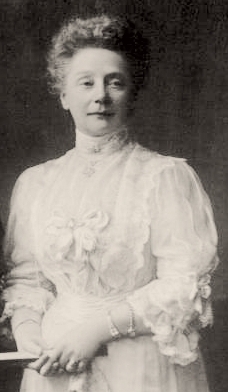
Princess Elisabeth Sybille of Saxe-Weimar-Eisenach was the first wife of Duke Johann Albrecht of Mecklenburg, Regent of Mecklenburg-Schwerin and of the Duchy of Brunswick.
David Köler, also Koler, Colerus was a German composer.

The Neustrelitz–Warnemünde Railway is a railway line in the North German state of Mecklenburg-Vorpommern. Most of the line is a double-tracked, electrified main line and runs for almost 130 kilometres from Neustrelitz to Warnemünde. It is also known in German as the Lloydbahn, referring to the Deutsch-Nordischer Lloyd company, which built the line and operated it in its early years after its opening in 1886.
Charlotte Cords was a cargo ship that was built in 1923 by Neptun AG, Rostock for German owners. She was seized by the Allies in Travemünde in May 1945, passed to the Ministry of War Transport (MoWT) and renamed Empire Connah. In 1946, she was allocated to the Soviet Government and renamed Nikolai Bauman. The ship was scuttled while carrying a cargo of nuclear waste in 1964.
Heinrich Pommerencke (1821–1873) was a successful portrait painter of Mecklenburg-Schwerin.
The Mecklenburg Railway Company was founded in 1845 to build a railway line from Hagenow to Rostock and to Güstrow, now in the German state of Mecklenburg-Vorpommern. It was nationalised in 1873 and combined with the Grand Duchy of Mecklenburg Friedrich-Franz Railway.

The Bützow–Szczecin railway is a nearly 200 km-long, mostly non-electrified, single-track main line railway running mostly in the German state of Mecklenburg-Vorpommern. The first section of the line between Bützow and Güstrow was opened in 1850 by the Mecklenburg Railway Company and is one of the oldest railways in Germany and is part of the Leipzig–Magdeburg–Schwerin–Rostock main line.

Franz Wilhelm Johann Bunke was a German landscape painter.

August Albrecht Christian Tischbein was a German painter and lithographer from the Tischbein family of artists.
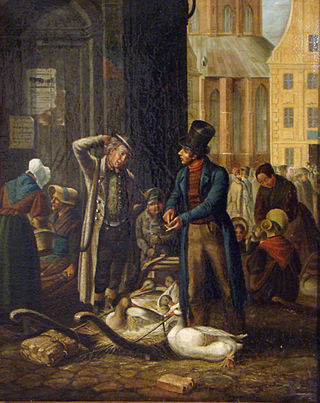
Paul Ludwig Philipp Wilhelm Tischbein was a German illustrator and painter; primarily of landscapes and genre scenes. He was a member of the Tischbein family of artists.
Rudolf Neuhaus was a German conductor.

Carl Suhrlandt was a German painter. All of his works feature animals; mostly horses.
